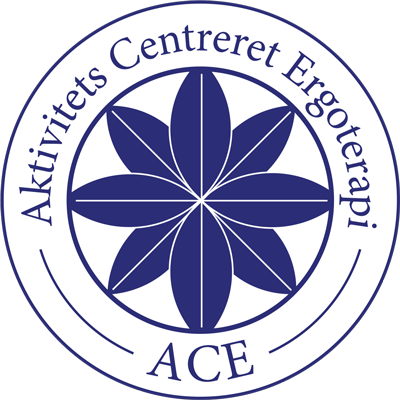Den terapeutiske relation
At arbejde klientcentreret er et centralt element i ergoterapeutisk praksis, hvilket også fremgår af professionens teorier og modeller (1-4) . Klientcentrering forudsætter et samspil mellem ergoterapeut og klient i arbejdet med at identificere dennes aktivitetsproblemer og mål for den ergoterapeutiske intervention (3) . Måden ergoterapeuten bruger sig selv terapeutisk til bl.a. at skabe en god og tryg klient-terapeut relation (5) kan have afgørende betydning for forløbet (6, 7) . Terapeutisk brug af sig selv defineres som ”bevidst brug af interpersonelle færdigheder til etablering af et relationsforhold til klienten” (8, 9) . Relationen kan få indflydelse på klientens evne til at medvirke i et ergoterapeutisk forløb og fremme engagement i aktivitet (10, 11) . Det handler derfor ikke kun om, hvilken intervention der ydes, men også måden hvorpå denne leveres. Ergoterapeuten bliver dermed et vigtigt virkemiddel i interventionen (11) .
The Intentional Relationship Model (IRM) (dansk: Model for tilsigtet samspil), udviklet af Renee R Taylor, beskriver, hvordan ergoterapeuten kan anvende forskellige terapeutiske tilgange (modi) i samarbejdet med klienten: 1) Advokerende, 2) Samarbejdende, 3) Indfølende, 4) Opmuntrende, 5) Instruerende og 6) Problemløsende (1) . Der kan opstå misforhold mellem de modi, som ergoterapeuten anvender og hvad klienten efterspørger og har brug for (13, 14) . Ergoterapeuter kan derfor med fordel blive mere bevidste om deres terapeutiske stil og tilpasse denne til den enkelte klients behov, for at fremme klientcentrering og engagement i aktivitet.
Til det findes redskaberne Self-Assessment of Modes Questionnaire (SAM) og Clinical Assessment of Modes (CAM) (15, 16) . Disse redskaber identificerer dels klientens præferencer for, hvilke modi de gerne vil have at ergoterapeuten anvender, dels ergoterapeutens foretrukne modi, hvorved man får indsigt i sin egen terapeutiske stil.
Oversigt og links til underkapitler
1. Taylor R. The Intentional Relationship: Occupational Therapy and Use of Self. Philadelphia: F.A. Davis Company; 2008.
2. Townsend E PH. Enabling Occupation II: Advancing an Occupational Therapy Vision for Health, Well-Being, & Justice through Occupation. 2nd ed. Ottawa: CAOT Publications ACE; 2013.
3. Fisher A. Occupational Therapy Intervention Process Model: A Model for Planning and Implementing Top-down, Client-centered. and Occupation-based Interventions. Fort Collins, USA: Three Star Press, Inc.; 2009.
4. Kielhofner G. Model Of Human Occupation. 4th ed. Philadelphia: Lippincott Williams & Wilkins; 2008.
5. Morrison TL, Smith JD. Working alliance development in occupational therapy: a cross-case analysis. Australian Occupational Therapy Journal 2013; 60(5):326-333.
6. Cole MB, McLean V. Therapeutic Relationships Re-Defined. Occupational Therapy in Mental Health 2003; 19(2):33-56.
7. Ranner M, von Koch L, Guidetti S et al. Client-centred ADL intervention after stroke: Occupational therapists' experiences. Scandinavian Journal of Occupational Therapy 2016; 23(2):81-90.
8. American Occupational Therapy Association. Occupational therapy practice framework: Domain and process (2nd ed.). American Journal of Occupational Therapy; 62:625–683.
9. Punwar AJ, Peloquin SM. Occupational therapy: Principles and practice. Philadelphia: Lippincott, Williams, & Wilkins.; 2000.
10. Babatunde F, MacDermid J, MacIntyre N. Characteristics of therapeutic alliance in musculoskeletal physiotherapy and occupational therapy practice: a scoping review of the literature. BMC Health Service Research 2017; 17(1):1-23.
11. Taylor R, Lee SW, Kielhofner G et al. Therapeutic Use of Self: A Nationwide Survey of Practitioners’ Attitudes and Experiences. American Journal of Occupational Therapy 2009; 63(2):198-207.
12. Taylor RR, Lee SW, Kielhofner G. Practitioners' Use of Interpersonal Modes within the Therapeutic Relationship: Results from a Nationwide Study. OTJR: Occupation, Participation and Health 2010; 31(1):6-14.
13. Morrison T. Individual and Environmental Implications of Working Alliances in Occupational Therapy. British Journal of Occupational Therapy 2013; 76(11):507-14.
14. Weiste E. Relational interaction in occupational therapy: Conversation analysis of positive feedback. Scandinavian Journal of Occupational Therapy 2018; 25(1):44-51.
15. Fan CW, Taylor RR. Assessing Therapeutic Communication During Rehabilitation: The Clinical Assessment of Modes. American Journal of Occupational Therapy 2016; 70(4):7004280010.
16. Taylor RR, Ivey C, Shepherd J et al. American Journal of Occupational Therapy. Self- Assessment of Modes Questionnaire - Version II. Chicago: University of Illinois at Chicago; 2013.


